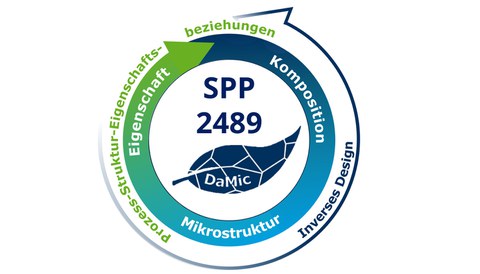Apr 11, 2024
Sustainable metals in the focus of a new DFG priority program
The German Research Foundation (DFG) is setting up eleven new Priority Programs (SPP), which are due to start in 2025. 43 initiatives applied for the six-year funding. The eleven funded research programs include SPP 2489 "DaMic - Data-driven Alloy and Microstructure Design of Sustainable Metallic Construction Materials". The DaMic coordinator is Prof. Markus Kästner, Chair of Computational and Experimental Solid Mechanics at TU Dresden.
It is imperative that the metallic materials of the future become more sustainable, as their production and processing currently cause 40% of all industrial greenhouse gas emissions. In addition, the extraction of the associated minerals produces several billion tons of by-products every year, some of which are harmful. DaMic aims to lay the essential scientific foundations for this development and contribute to the establishment of a new field of research at the interface of digitalization and sustainability.
In the form of materials with a reduced number of chemical alloying elements and alloys with a high tolerance to impurities from the use of secondary raw materials, two fundamental options for improving recyclability and sustainability are the focus of the investigations. In both cases, negative effects of the changed alloy compositions are to be compensated for by designing the microstructure of the material in a targeted manner so that the mechanical properties are comparable with currently available construction materials.
Ten sub-projects are expected to be selected in a competitive process from proposals received throughout Germany for interdisciplinary tandem projects involving experts from the fields of mechanics and materials science and bundled in DaMic. The researchers will work together on the development and application of a data-driven approach for cross-scale research and material design. In particular, machine-learning-based design approaches based on digital process-structure-property relationships (PSEB) will be used. In the first funding period, the foundations for the prediction and inversion of PSEB for digital material design will be created. The second funding period will then focus on the development of end-to-end, fully automated workflows for alloy and microstructure design of sustainable metallic engineering materials.
Members of the program committee
Coordinator
Prof. Markus Kästner, TU Dresden, Chair of Computational and Experimental Solid Mechanics - DaMic: Microstructure Reconstruction, Machine Learning, Inverse Design
Other members (in alphabetical order):
Prof. Daniel Balzani, Ruhr-University Bochum, Continuum Mechanics - DaMic: Microstructure Modeling, Multi-scale Modeling, Uncertainty Quantification
Prof. Britta Nestler, Karlsruhe Institute of Technology, Microstructure Simulation in Materials Engineering - DaMic : Phase Field Modeling, Thermodynamics, Data Science
Prof. Dierk Raabe, Max Planck Institute for Iron Research, Düsseldorf, Microstructure Physics and Alloy Design - DaMic : Cross-scale modeling, sustainability, alloy design
Prof. Bai-Xiang Xu, TU Darmstadt, mechanics of functional materials - DaMic : phase field modeling, thermo-chemo-mechanics
Contact
Prof. Markus Kästner
Coordinator DaMic
Chair of Computational and Experimental Solid Mechanics
+49 351 463-43065

